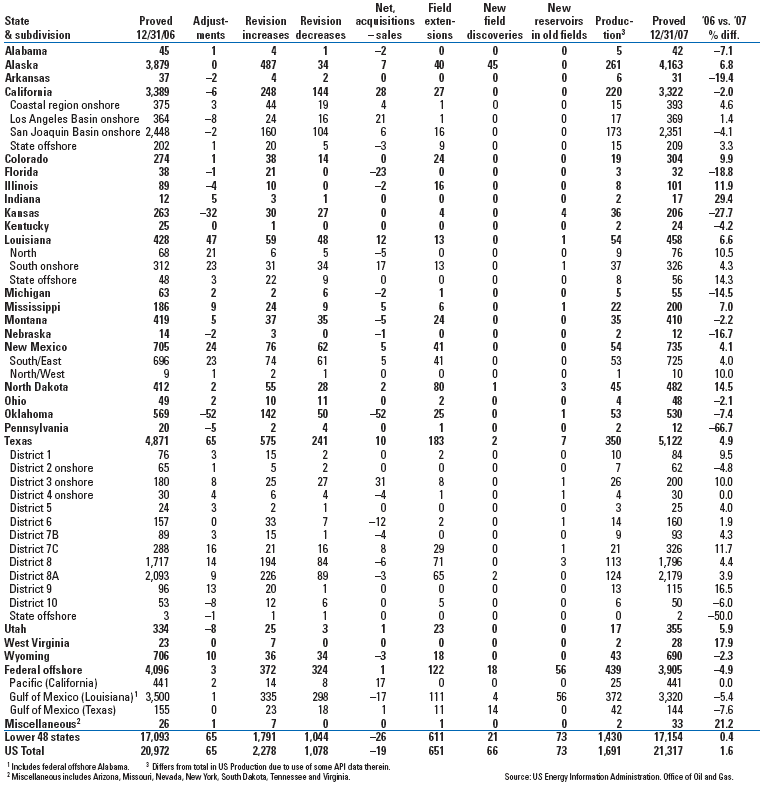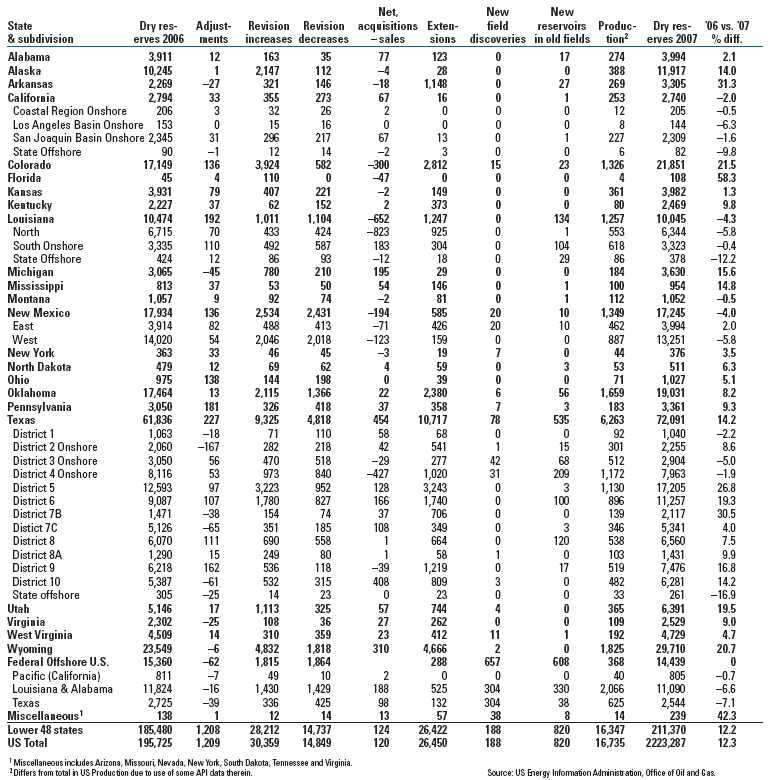While crude, natural gas and NGL proved reserves all increased more than production, the improvement was uneven. Crude increased the least, but still added a respectable 2 billion bbl of proved reserves. This beat production-which was last done four years ago-by more than 300 million bbl. The result was 21.3 billion bbl of proved reserves at the end of 2007, or about 2% more than the previous year. (Since it takes about a year to gather and analyze the reserves data, 2007 is the last year in which such data is available.)
Crude oil proved reserves, reserves changes and production, 2007, millions of bbl
Click table to enlarge |
 |
|
This increase is rather lackluster with regard to prices, which soared in 2004 through 2007, and should have resulted in substantial reserves increases, assuming prices add to recovery factors by shifting the economic threshold. Looking over the past few years, prices have indeed stayed otherwise relentless production decline, sometimes resulting in production increases, and presumably raising recovery factors. The answer probably lies in the success of deepwater exploration, and perhaps reserves are calculated a bit more conservatively in the wake of the widespread 2005 reserves calculations embarrassments. Also, recall that the United States is primarily a gas-drilling region, with 80% of wells drilled for gas, which helps explain why gas reserves fared so much better.
Total dry natural gas proved reserves, reserves changes and production, 2007, Bcf @ 14.73 psia and 60°F
Click table to enlarge |
 |
|
Record-high additions to dry gas proved reserves of 46.1 Tcf beat gas production by 26.6 Tcf, raising the country’s dry gas reserves to 237.7 Tcf, the highest level ever, and a 13% increase from the previous year. The record additions largely result from unconventional gas resource development, such as coalbed methane, shale gas and tight sands, which in turn have been enabled by applying the latest improvements in horizontal drilling and hydraulic fracturing.
Not shown are NGLs, which improved with gas production, adding 830 million bbl in reserves over production, which resulted in about an 8% increase in 2006 NGL reserve levels. 
|




